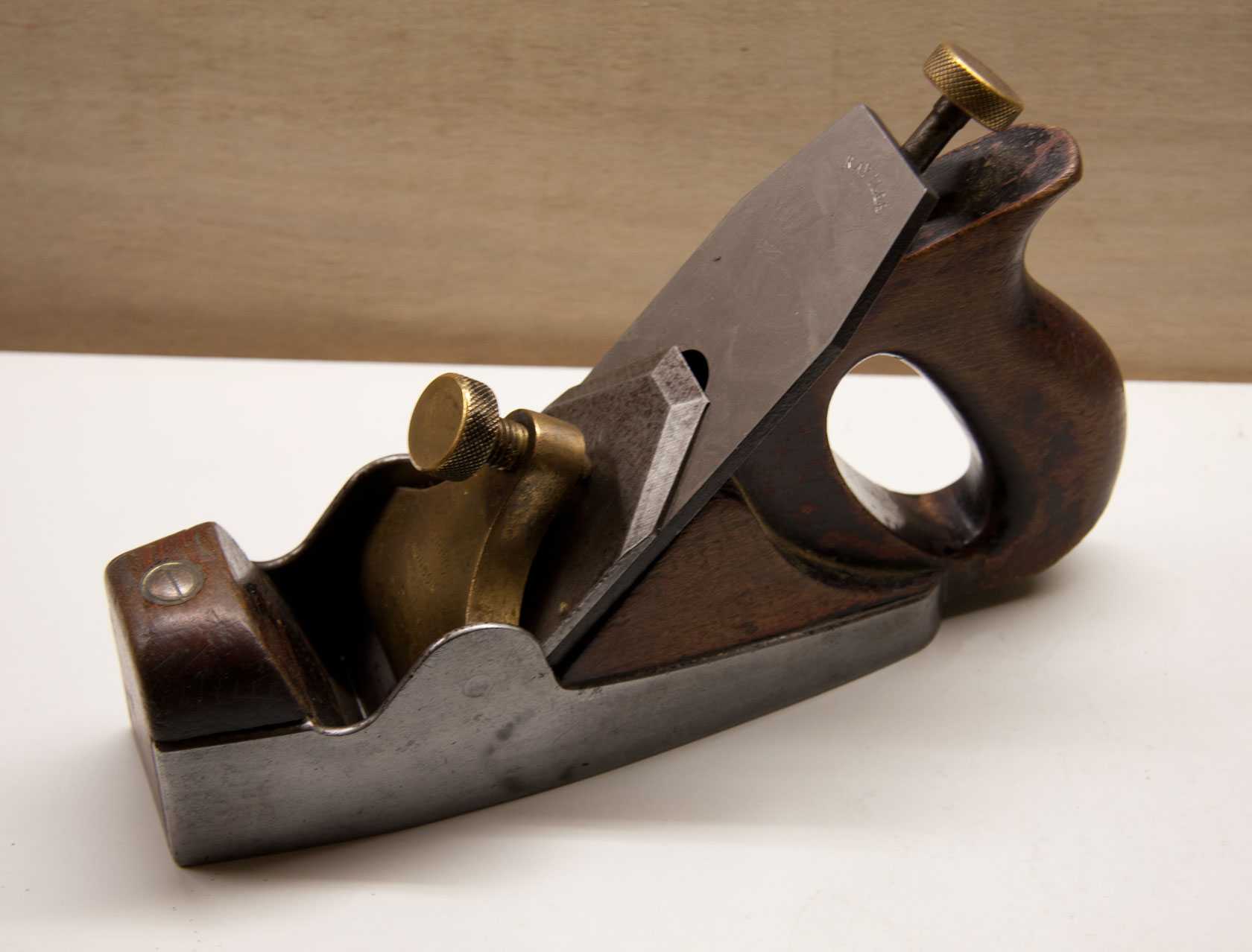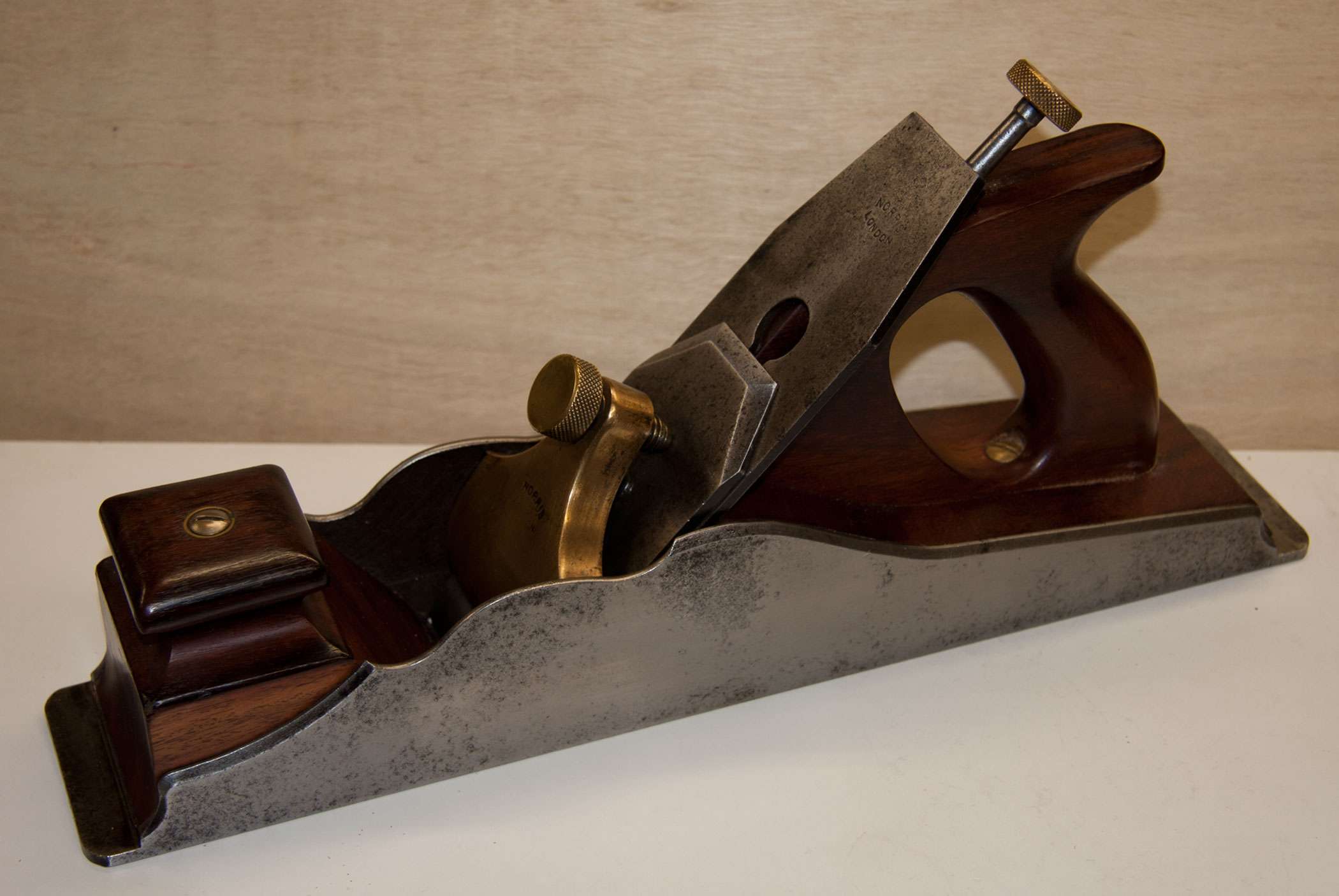condeesteso
Established Member
(you can tell Strickly is back on... I'm posting things on the forum.)
Calling the Norris experts please. I have this post-War A5 (more about it in a moment) and am convinced the infills are mahogany. I have not researched everywhere yet, but in all the Norris info I can find, 'ebonised' beech abounds, no mention of mahogany. I'm sure it is post-War (screw through front bun, Norris marks etc). I could imagine the mahogany slipped in after rosewood (cost, availability??) and before beech maybe? Cannot see any Mahogany ones anywhere though.

It was an accidental find but the seller had done his homework so no steal. One owners stamp and the blade is virtually unused, adjuster was a little sticky but no wear at all... very promising in all


It is now on test against these 3, but I have more to do on the blade back to be fair to it.

Any knowledge about this period Norris would be welcome. My first thoughts are - I'll be using it so do not care a jot about dovetail, gunmetal etc - nice but don't need them I think. The adjuster is excellent, almost zero play, very smooth (I always back the lever off first, but I'm used to that with LN low-angle planes anyway, just good practice I think). Overall very promising indeed, nice size and weight, massive blade and cap, tight mouth... all very
good signs. I'll get it to work properly soon, more pics hopefully.
Calling the Norris experts please. I have this post-War A5 (more about it in a moment) and am convinced the infills are mahogany. I have not researched everywhere yet, but in all the Norris info I can find, 'ebonised' beech abounds, no mention of mahogany. I'm sure it is post-War (screw through front bun, Norris marks etc). I could imagine the mahogany slipped in after rosewood (cost, availability??) and before beech maybe? Cannot see any Mahogany ones anywhere though.

It was an accidental find but the seller had done his homework so no steal. One owners stamp and the blade is virtually unused, adjuster was a little sticky but no wear at all... very promising in all


It is now on test against these 3, but I have more to do on the blade back to be fair to it.

Any knowledge about this period Norris would be welcome. My first thoughts are - I'll be using it so do not care a jot about dovetail, gunmetal etc - nice but don't need them I think. The adjuster is excellent, almost zero play, very smooth (I always back the lever off first, but I'm used to that with LN low-angle planes anyway, just good practice I think). Overall very promising indeed, nice size and weight, massive blade and cap, tight mouth... all very
good signs. I'll get it to work properly soon, more pics hopefully.



















































